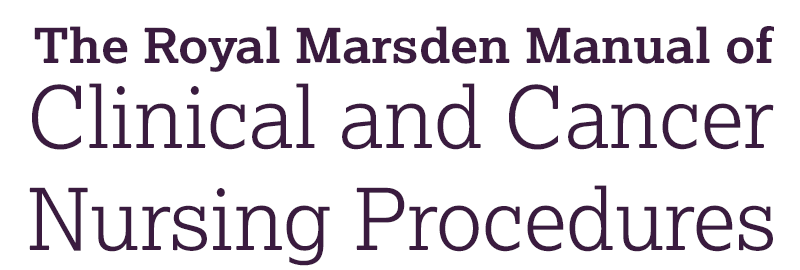Chapter 16: Perioperative care
Skip chapter table of contents and go to main content
Source: Adapted from NICE ([148]).
Mechanical and pharmacological thromboembolism prophylaxis
Definition
Venous thromboembolism (VTE) is a condition where a thrombus (clot) forms within a vein (often the deep veins of the lower limbs). It can be very dangerous as the clot can dislodge and travel in the blood to the pulmonary circulation (NICE [145]).
Related theory
VTE is normally caused by stasis of blood within a vessel, trauma to a vessel or an increase in the ability of the blood to clot (Figures 16.5 and 16.6). This most frequently happens in the deep veins of the leg, when it is termed a ‘deep vein thrombosis’ or DVT. If one of these clots dislodges from the leg and travels to the lungs via the bloodstream, it is called a ‘pulmonary embolus’ or PE (Figure 16.7); this can be a fatal event (NICE [148]). Potential clinical signs of DVT and PE are outlined in Box 16.5.
Prevention of post‐operative VTE is considered a quality and patient safety measure in most mandated quality‐improvement initiatives. Various interventions have been used for prophylaxis of VTE (Roberts and Lawrence [178]). These include mechanical devices such as graduated antiembolic stockings (Figure 16.8), intermittent pneumatic compression (IPC) devices, and pharmacological agents such as unfractionated heparin, low‐molecular‐weight heparin and fondaparinux. Most of the strategies employ a combination of mechanical methods and pharmacological agents (Ma et al. [112]).
NICE ([148]) guidance on venous thrombosis recommends that all patients admitted to hospital must have a VTE risk assessment. They should then be reassessed within 24 hours of admission. A specific risk assessment tool (NICE [148]) (Figure 16.9) forms the basis of hospitals’ local patient perioperative documentation in the management of VTE.
Figure 16.9 Example of a venous thromboembolism (VTE) risk assessment form. Source: Reproduced from DH ([50]) with permission of the National Institute for Health and Care Excellence.
Box 16.5
Signs of deep vein thrombosis or pulmonary embolism
- Complaints of calf or thigh pain
- Erythema, warmth, tenderness and abnormal swelling of the calf or thigh in the affected limb
- Numbness or tingling of the feet
- Dyspnoea, chest pain or signs of shock
- Pain in the chest, back or ribs that gets worse when the patient breathes in deeply
- Coughing up blood
Venous thrombosis risk factors include the following:
- surgery, including day surgery, where total anaesthetic and surgery time is over 90 minutes, or 60 minutes if the surgery involves the pelvis or lower limbs
- immobility, for example prolonged bedrest
- active cancer
- severe cardiac failure or recent myocardial infarction
- acute respiratory failure
- older age (i.e. elderly)
- previous history of DVT or PE
- acute infection or inflammation
- diabetes
- smoking
- obesity
- gross varicose veins
- paralysis of lower limbs
- clotting disorders
- hormone replacement therapy
- oral contraceptives (Swanepoel et al. [198]).
All patients requiring an inpatient stay for surgery should have prophylactic treatment to reduce the risk of DVT, which may include prophylactic anticoagulation (e.g. low‐molecular‐weight heparin) and mechanical compression methods. Antiembolic stockings (see Figure 16.8) are the most common mechanical compression method, but extremely high‐risk patients may also use intermittent pneumatic compression devices or venous foot pumps (NICE [148]) in the intraoperative and post‐operative periods (Figure 16.10). If antiembolic stockings are contraindicated (Box 16.6) then alternative forms of mechanical compression may need to be considered by the surgical team.
Box 16.6
Contraindications for antiembolism stockings
- Suspected or proven peripheral arterial disease
- Peripheral arterial bypass grafting
- Peripheral neuropathy or other causes of sensory impairment
- Local condition in which stockings may cause damage, such as fragile tissue‐paper skin
- Allergy to the material of manufacture
- Severe leg oedema
- Major limb deformity or unusual leg size or shape preventing correct fit
- Venous ulcers, wounds or pressure areas (not an absolute contraindication, but caution is required)
Patients should be given verbal and written information before surgery about the risks of VTE and the effectiveness of prophylaxis (NICE [148]) (see Figure 16.11 for an example of a patient information leaflet). It is estimated that 10–40% of patients undergoing major surgery will develop a DVT, with the risk increasing to 40–60% of patients undergoing major orthopaedic surgery (Flevas et al. [63]).

Figure 16.11 Example of a patient information sheet for deep vein thrombosis (DVT). Source: Adapted from Royal Marsden NHS Foundation Trust ([181]) with permission of The Royal Marsden NHS Foundation Trust.
Mechanical compression methods reduce the risk of DVT by about two‐thirds when used as monotherapy and by about half when added to pharmacological methods (Bates et al. [26], Roderick et al. [179]). Mechanical VTE prophylaxis will be continued until the patient no longer has significantly reduced mobility relative to their normal or anticipated mobility (NICE [148]).
Graduated antiembolic stockings promote venous flow and reduce venous stasis not only in the legs but also in the pelvic veins and inferior vena cava (Pavon et al. [162]). There are two types of graduated antiembolic stocking: knee high and thigh high (see Figure 16.8). Thigh‐length stockings appear to have superior efficacy; however, practical issues such as patient acceptability may prevent their wide use in clinical practice (Wade et al. [215], [216]). Stockings should be applied according to the manufacturer's instructions and must be removed daily to assess the condition of the skin and tissues.
Alternatively, an intermittent pneumatic compression device provides sequential application of external compression on the lower extremities. It is believed to increase pulsatile venous flow (Pavon et al. [162]). This leads to improved emptying of the veins, decreasing venous pressure and increasing the arteriovenous pressure gradient, with subsequent increase in arterial flow.
Procedure guideline 16.1












